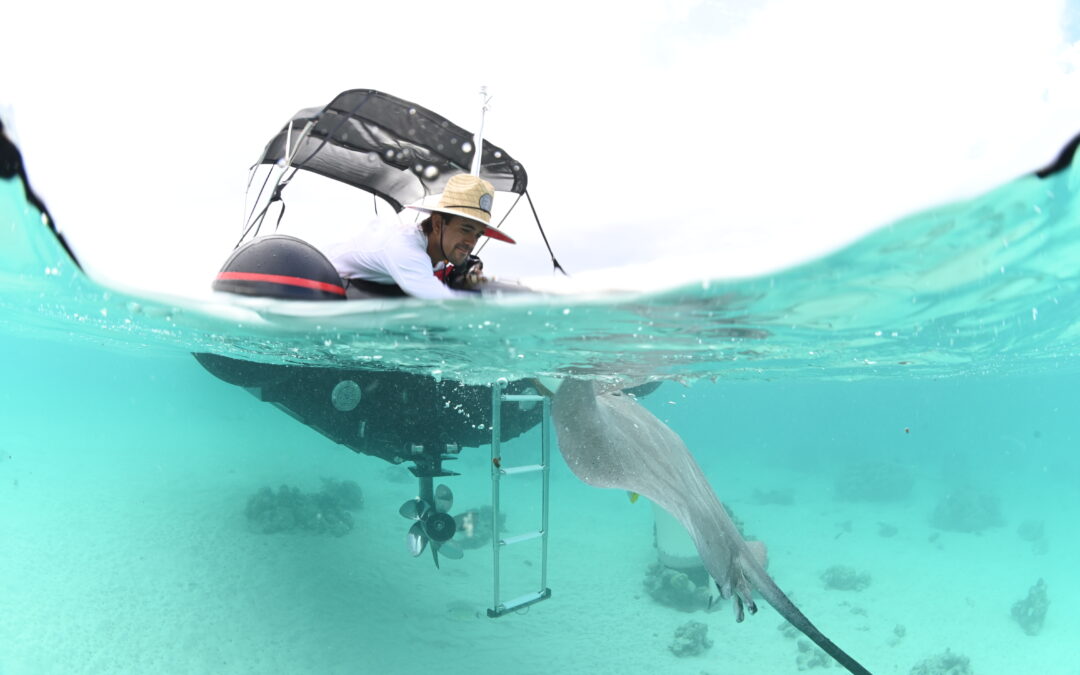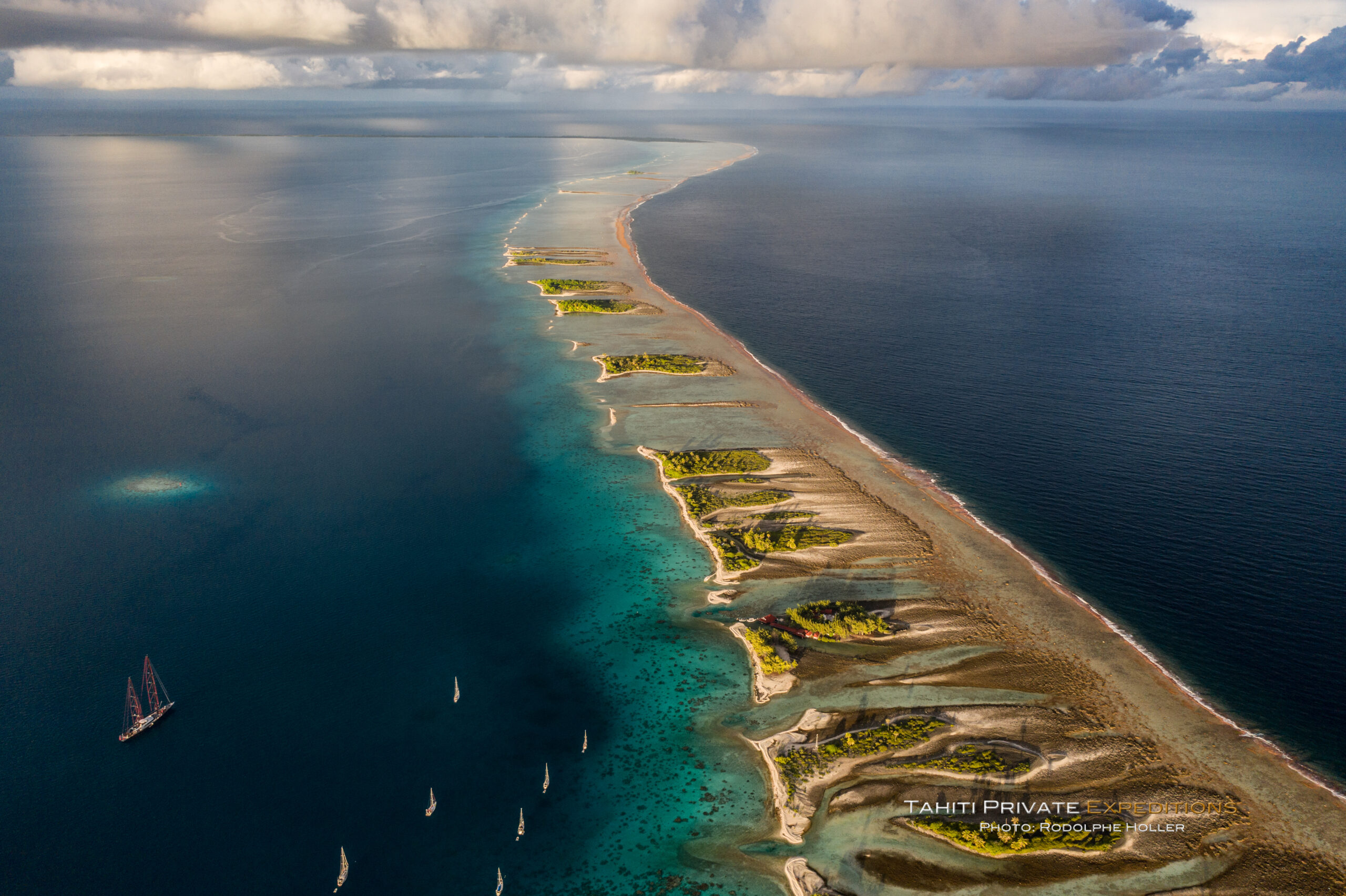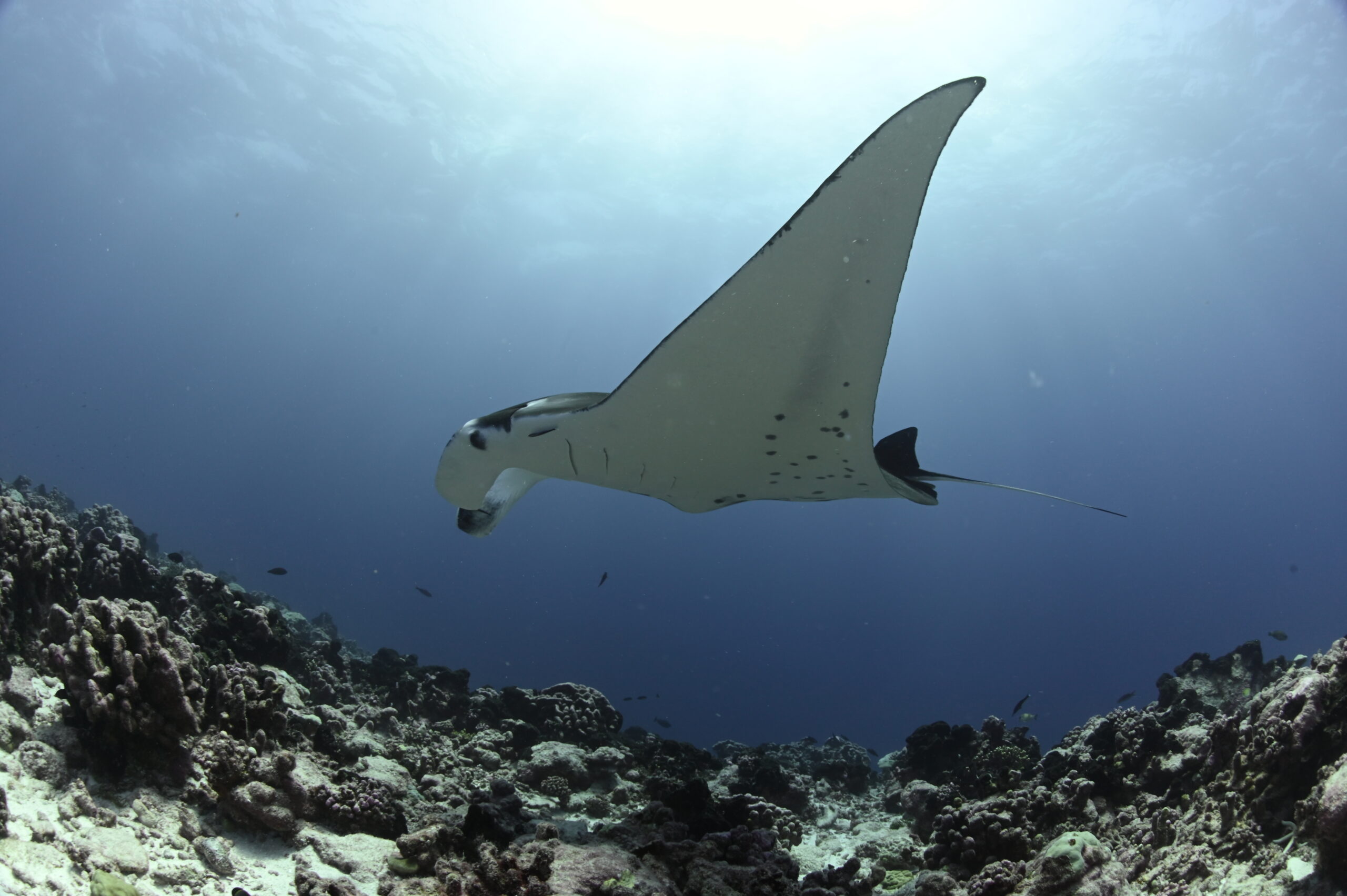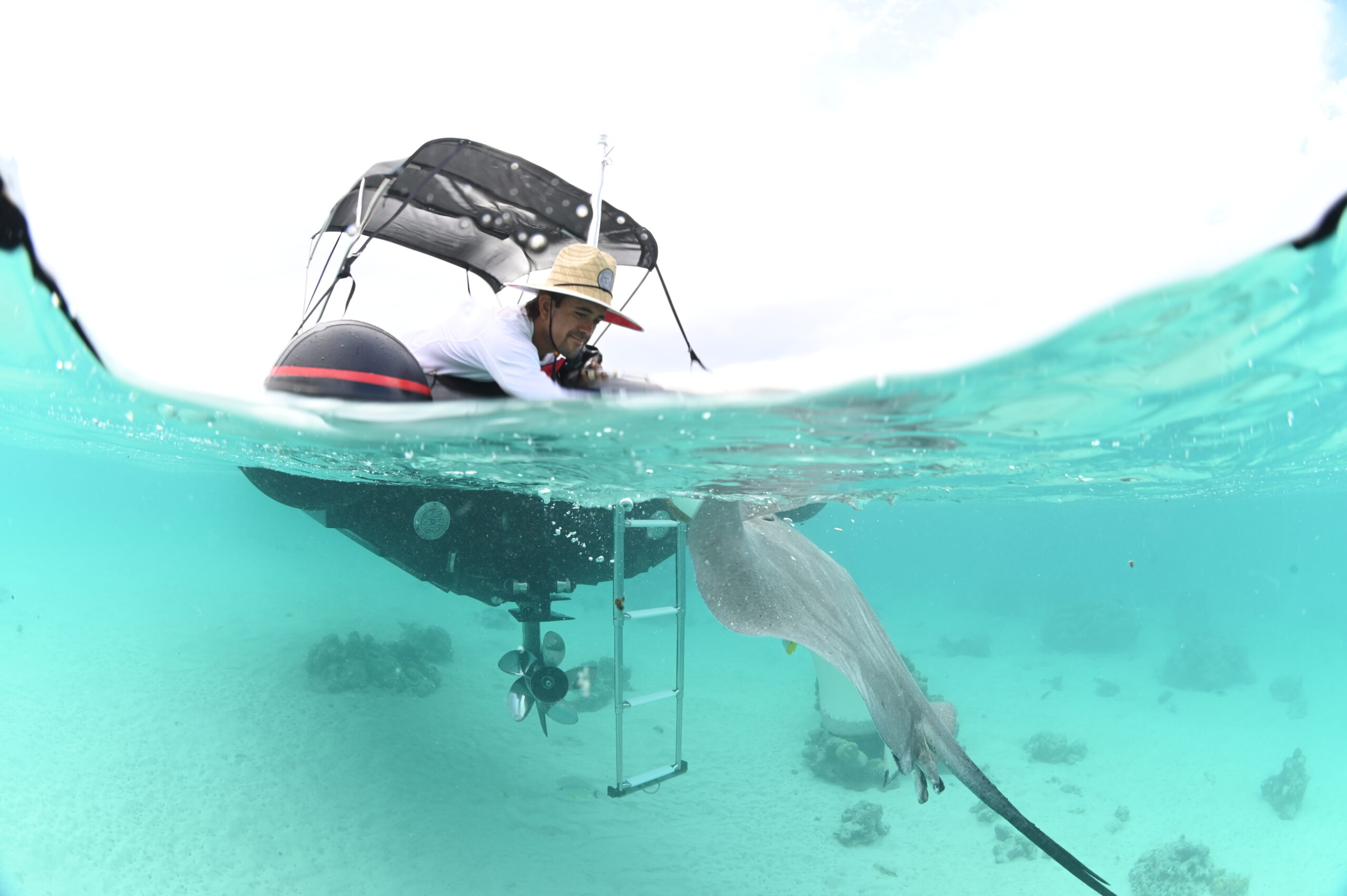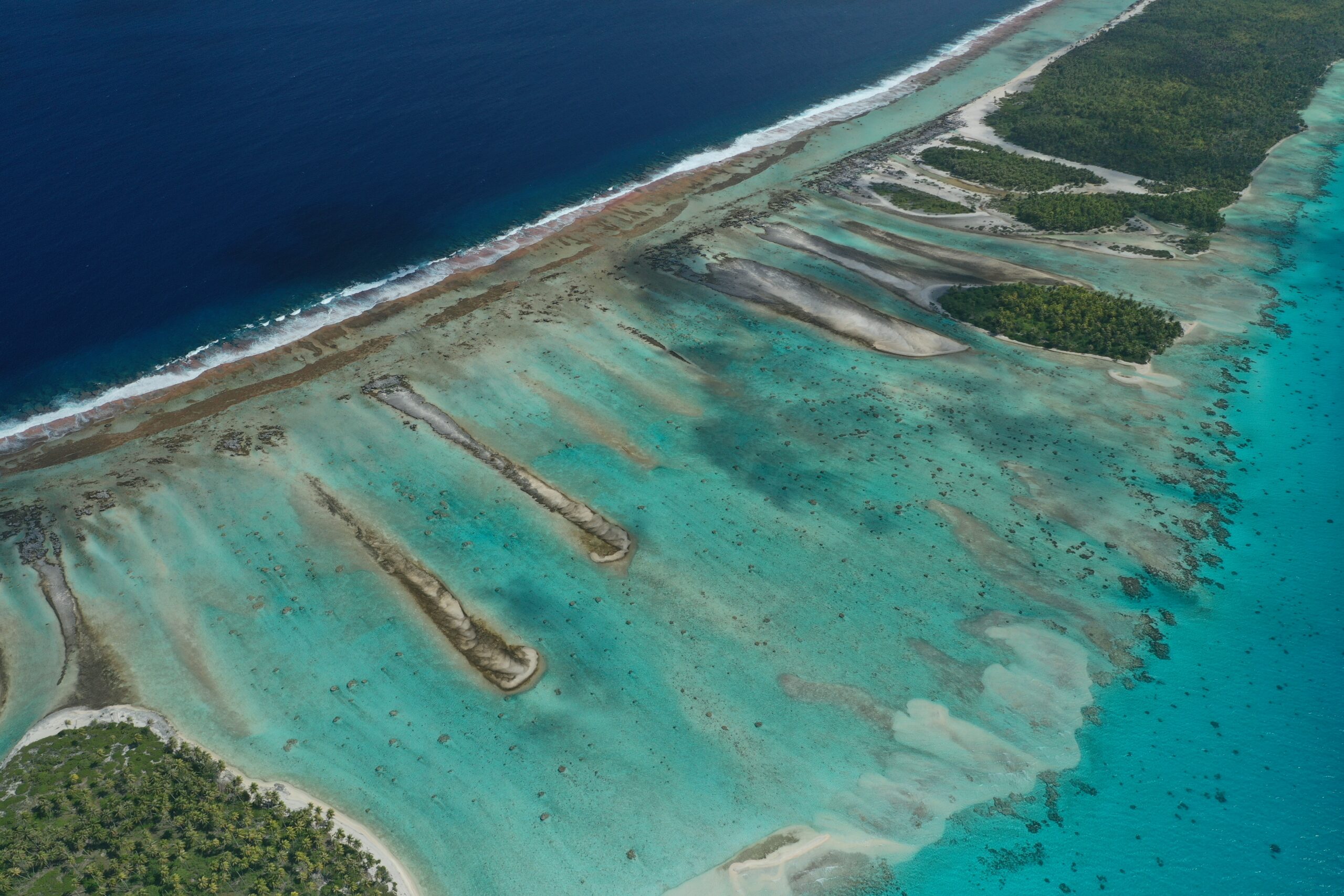The shape of Tahiti appeared as the sun was rising on January 7th, indicating that we had reached land after a 2-week crossing that started in Baja California. The lush green and dramatic mountains were the first things we noticed; a view we would get used to as we made Marina Taina our new base for the next 3 months.
The marina, in the south of Papeete, was very different from any other we had encountered before; crystal clear waters, with coral growing on the sides of the dock. Noticeably, we were the biggest boat there, with smaller catamarans and sailboats being the majority around. With views to the island of Moorea and groups of locals coming past as they rowed through the channel, while young teenagers with their foil boards caught the wakes of small boats cruising through, Marina Taina was different.
We spent the first few weeks under the heavy rains of Tahiti’s wet season, getting ready for our first exploration of French Polynesia. At the beginning of February, we set sail for Nuku Hiva, the biggest island of the Marquesas group. After encountering some rough seas beating against the trade winds, we arrived three days later, and the dry landscape that welcomed us made a contrast with the green beauty of the island we had left behind, showing us just how different every corner of French Polynesia can be.
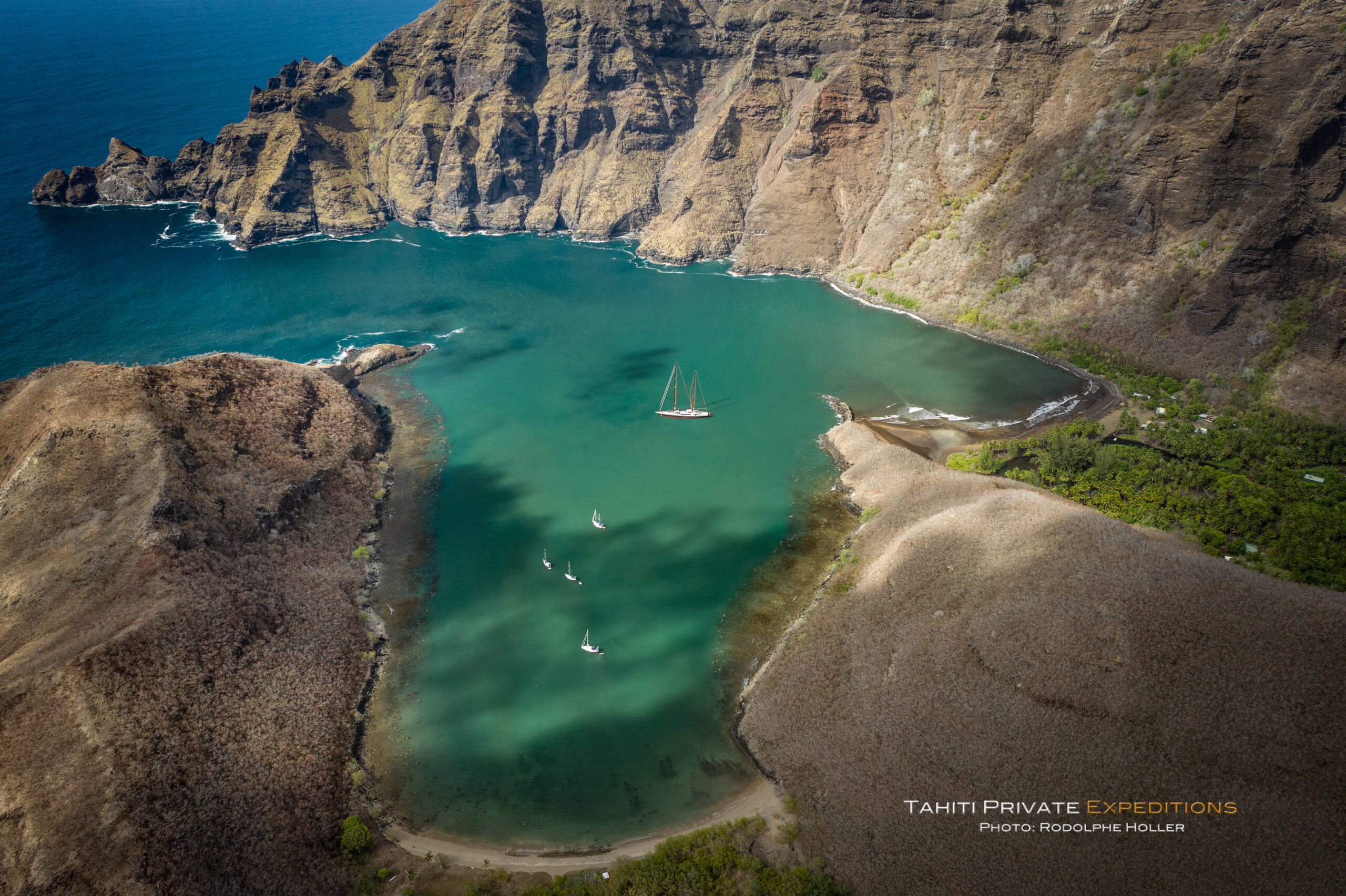
On our days in Nuku Hiva, we had the chance to briefly explore the island, learn about its history, and try some of the local gastronomy. However brief, our time in the Marquesas gave us an insight into this part of French Polynesia, still relatively untouched and geographically different from any other place we visited during the rest of our trip.
It was here where we were joined by Rodolphe Holler. Rodolphe, co-founder of Tahiti Private Expeditions, is a local guide, dive instructor, professional videographer, and probably one of the few people that knows French Polynesian waters like the palm of his hand. He stayed with us during most of our time in the country, and thanks to him we had a trip full of action, epic dives, and visits to hidden gems only available to a few.
A day and a half after departing from the Marquesas, we arrived in Fakarava, the 2nd biggest Atoll in the Tuamotus, and a popular stop for keen divers that visit the country.
Fakarava has two passes entering the 1,112² km lagoon. The South Pass has a dive site that is known for what some call the “wall of sharks”, and we can say that it lives up to its name. Hundreds of grey reef sharks gathering together along the Atoll’s pass are a common sight, while other big pelagic fish can be seen around the area.
The dives here, as in most of the Tuamotus passes, are drift dives where you normally start outside of the lagoon and drift inside with the incoming tide. With changing currents, these dives require good planning and a dive guide that knows the area, but they are incredibly fun and give a very good opportunity of encountering many species of sharks, rays, and other big fish.
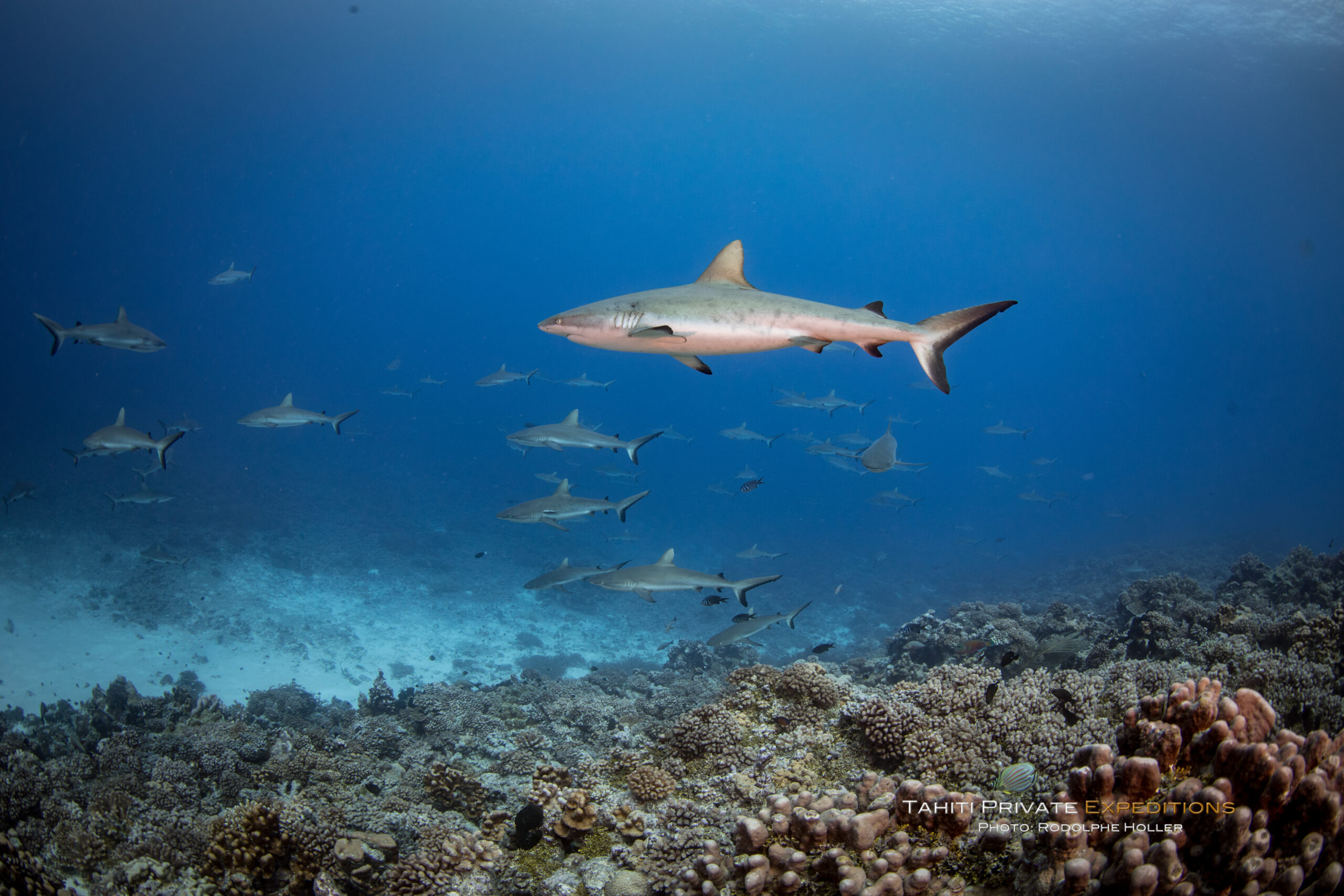
But it’s not only the submarine life that describes Fakarava. During our days there, we walked through pink sand beaches and collected coconuts. We visited pearl farms and cycled around the motus (islets), enjoying the views of crystal clear waters and palm trees.
After the first couple of weeks cruising the central and eastern side of the country, we continued our journey to the Society Islands, known for the postcard beaches and the overwater bungalows that evoke paradise.
Bora Bora was our first stop on this side of the archipelago. We spent a couple of days there and got to experience several marine encounters inside the vast lagoon. Rodolphe, always with a plan in mind, took us on a journey to find manta rays and schools of eagle rays as they were swimming through.
After Bora Bora came Raiatea, Taha’a and Huahine, where we explored the land, from vanilla farms to small towns where we cruised through and bought fresh fruit from the local markets.
But as our time to start our science trip was getting closer, we went back to Tahiti and Moorea to spend a few days before we got started with the next expedition. While we got provisions and did crew changeovers, we made the most of our time on the islands. Moorea and Tahiti both have great hiking, as the islands are a paradise filled with waterfalls, dramatic peaks, and pathways filled with dense vegetation. Extraordinary was one of the hikes in Tahiti, near the city of Papeete, where, after two hours hiking up, we swam at the top of a waterfall while enjoying the views that come with being at the summit of a mountain.
In Moorea, Seahawk spent 6 days anchored off Cook’s Bay, an anchorage with stunning views to Mount Mouaputa and Tohivea. Those days were all about hiking and getting to know the land, but there was also time spent in the water, snorkeling with black tip sharks and curious stingrays that are used to being fed by tourists; they didn’t give it a second thought before swimming straight to us to see if we carried any food.
Our days in Tahiti and Moorea came to an end as we left en route for Tuamotus once again, this time on our way to start the new science trip “Operation Swimway, French Polynesia”, that we had arranged with our partners in YachtAid Global, Rodolphe, and the team of scientist joining us from University of Hawaii and Centre de Recherches Insulaires et Observatoire de l’Environnement (CRIOBE).
On our way to start the trip at the end of March, we stopped in Rangiroa, the Tuamotus biggest and most popular Atoll. It is a ‘must do’ stop in the archipelago, with world-class diving and hundreds of islets and sandbars to explore
Our first visit to Rangiroa was mostly focused on diving. We had heard rumors of friendly dolphins approaching divers in this particular place, and so we went on a mission to find them. The rumors turned out to be true, and during the time we were there, we were approached daily by dolphins on our morning dives. Another unusual encounter that those on board Seahawk can add to their library of experiences.
With the science trip starting soon in Makemo, we picked up anchor after a few days in Rangiroa and set sail once again, on route to start the new adventure. “Operation Swimway” was waiting on the other side.
If you want to know more, take a look at our Polynesian voyage on this video made by Rodolphe Holler.

